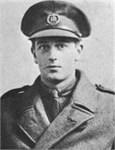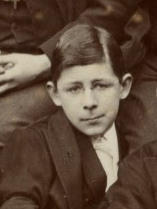Reed, Roland Anthony, brother of Richard Gordon Reed (qv); b. 29 Dec. 1920; adm. Sept. 1934 (G); left Dec. 1938; RMC Sandhurst, 2nd Lieut. Roy. Tank: Regt May 1940, Lieut. Nov. 1941; killed in action (Libya) 31 Dec. 1941.
Roland Anthony Reed was born at Clifton Campville, Staffordshire on the 29th of December 1920 the second son of the Reverend Roland William Reed and Claudia Mary (nee Poore) Reed of The Rectory, Clifton near Tamworth in Staffordshire. He was educated at Westminster School where he was up Grant’s from September 1934 to December 1938. He entered the Royal Military College, Sandhurst in 1939 before being commissioned as a 2nd Lieutenant in the Royal Tank Regiment on the 11th May 1940. He was posted to the 8th Royal Tank Regiment and was promoted to Lieutenant on the 11th of November 1941.
On the 30th of December 1941, the 8th Royal Tank Regiment was in camp at Bir Bu Tabel when they received orders at 6pm to make an attack on Bardia Fortress the following morning in support of the 3rd South African Infantry Brigade. A, B and C Squadrons left camp a short time later in three columns and arrived at their assembly point at 8.45pm that night.
The supporting artillery barrage began at 4.15am on the morning of the 31st of December 1941 with C Squadron arriving at the forward assembly area at 5.15am. Their tanks began moving forward though gaps in the minefields, which had been cleared by the Royal Engineers, at 6.30am. A short time later they received a message from B Squadron reporting that the infantry were being held up by enemy machine guns and were requesting assistance. Two tanks, those of Richard Reed and Major Peter Norman Veale, went forward to attack the enemy positions but when they arrived there the enemy appeared to have withdrawn and they returned to rejoin the Squadron. At 9am, it was reported that two of the three main enemy strong points had been silenced but that a third was still active and the infantry could not locate its exact position. A soon as Richard Reed’s tank went forward to assist it received a direct hit from the enemy strong point and caught fire. The tank commanded by Sergeant Barrett met the same fate immediately afterwards. Sergeant Barrett ran across to Richard Reed’s burning tank and managed to rescue the driver and the radio operator before making for cover. The rest of the crew perished. The enemy gun position was knocked out by Peter Veale a few minutes later. With no infantry support available from the South Africans, the rest of C Squadron withdrew.
The Regiment’s objectives were taken by noon but an enemy counterattack began at 12.40pm, which was driven off by 5pm after heavy fighting. The surviving tanks from the Regiment withdrew for the night at 11.30pm.
He is buried at Halfaya Sollum War Cemetery, Joint Grave 3 E 9.

